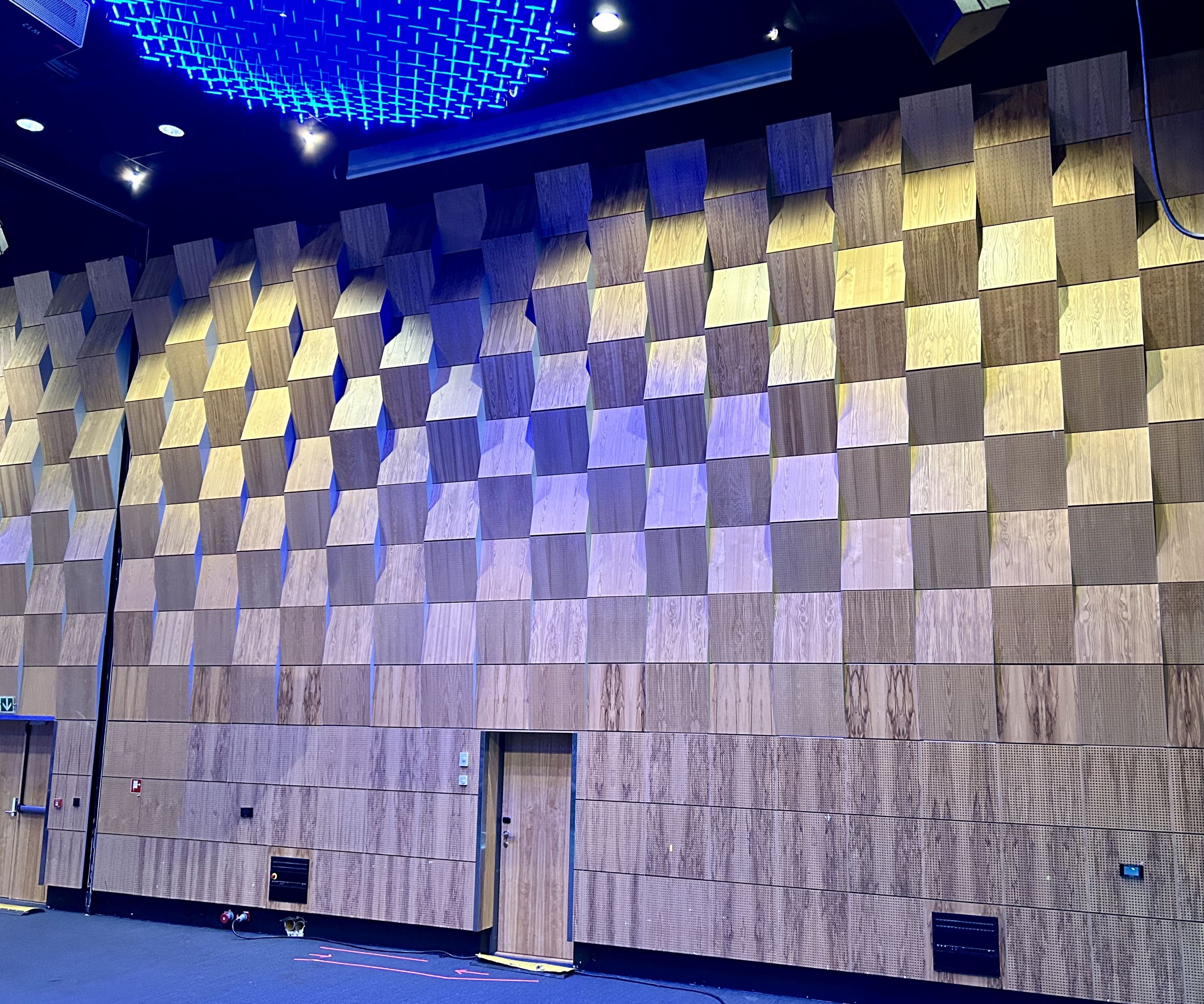
Why are acoustics important in a room? Solutions for a better sound environment
Have you ever been in a room that makes you feel tired? Have you found it difficult to understand what is being said around the table where you are sitting? Today, there is more and more talk about acoustics in everyday life, and for good reason.
In today's noisy society, good acoustics make a room a better place to be. When a room is properly acoustically adapted, it lets in less noise from outside and from adjacent rooms. This provides both a better working environment and increased comfort. In fact, research shows that other people's voices are what disturbs us the most in open-plan offices.
Good acoustics – for better communication and well-being
In places where people are talking, such as meeting rooms or restaurants, clear speech is essential. With good acoustics, you don't have to strain to hear what others are saying, and disturbing noises from movement in the room are dampened.
If the reverberation is too long, it will be perceived as noise. Having many hard and smooth surfaces lead to too much reverberation. You can sense reverberation when the sound bounces back and forth between the walls instead of hitting once and then being absorbed.
Poor acoustics – consequences for communication and comfort
Imagine a room full of people talking in groups. With poor acoustics, the voices will echo and create noise. You have to raise your voice to be heard, and when everyone else does the same, the noise level only worsens.
In contrast, in a room with good acoustics, you can clearly hear what people are saying because the words become clearer, and the echo disappears quickly.
This is especially important in:
• Open-plan offices and working environments
• Restaurants and dining areas
• Classrooms and rooms used for teaching
• Meeting rooms and conference halls
• The common areas of a home
How to improve the acoustics in the room – practical solutions
So how do you improve the acoustics in a room? Here are some effective measures:
1. Choose thicker ceiling tiles that absorb more sound
2. Consider the hardness of the walls if you want to have smooth walls
3. Use surfaces with depth and texture that create cavities for the sound
4. Create space between outermost surface and the structural surface for better absorption
Acoustic slats – aesthetic and functional
Our slatted elements with acoustic panels on the back provide a very good effect. There are a variety of different widths and surface treatments available for the slats, as well as varied spacing between them that provide different sound absorption.
Slatted solutions have several advantages:
• Combines visual aesthetics with acoustic functionality
• Adaptable to the room's design and colour palette
• Provides effective sound attenuation and reduced reverberation
• Creates an architecturally interesting design element in the room
Perforated acoustic panels – an alternative look
For a different look, we also offer perforated panels. These are veneered panels with holes drilled through so that the sound can escape. There are many good solutions that can be tailored to fit your needs and wishes.
Perforated panels provide:
• A more discreet acoustic element
• The possibility to have comprehensive wall or ceiling solutions
• Varied perforation patterns for different acoustic effects
• The possibility to have a concealed acoustic elements

Better quality of life with good acoustics
Remember that a room with good acoustics provides better well-being and comfort for the people inside. Reduced reverberation and noise contribute to a more comfortable atmosphere, better communication and less mental fatigue.
Read more about our range of acoustics options for slats here and panels here or contact us to learn more about how you can improve the acoustics in your space.



